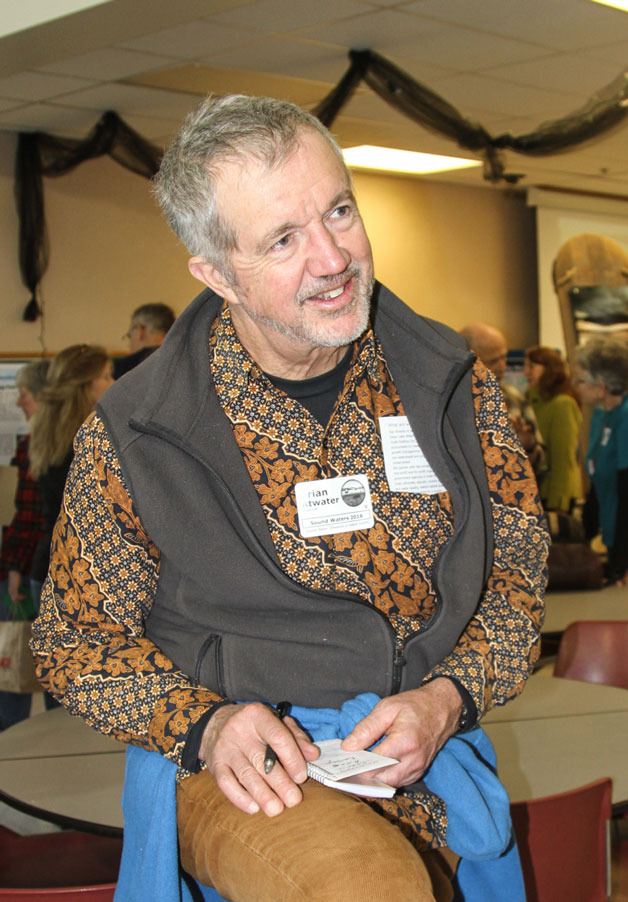By DAN PEDERSEN
For The Record
No one knows how many Native Americans died when a magnitude 9.0 earthquake and tsunami struck the Washington coast on Jan. 26, 1700. Besides battering the coast, the tsunami surged the entire length of the Strait of Juan de Fuca and reached the northwest shores of Whidbey Island.
Speaking at South Whidbey High School this past Saturday, Dr. Brian Atwater said the 1700 event worries geologists, who know another like it will happen in the future.
The coastline is much more populous now, said Atwater, of the U.S. Geological Survey and University of Washington. He was keynote speaker at the 20th annual, one-day Sound Waters University at South Whidbey High School.
In 1700, sections of the coast sank below sea level and a surge of water swept onshore, knocking over everything in its path and carrying off people and structures, much like the recent Fukushima event. “Presumably the loss of life was heavy,” Atwater said.
Native American reports from that time come only from oral histories. The Native Americans left no written records, but in Japan several observers wrote about a mysterious tsunami not associated with any earthquake there. Research by Atwater and others now links that Japanese tsunami to a massive quake and tsunami off the U.S. Northwest coast. The evidence is found in buried marsh soils of low-lying, coastal Washington.
Atwater spoke before a packed auditorium of more than 600 attending Sound Waters University, an annual environmental education conference sponsored by Sound Water Stewards. The all-volunteer non-profit formerly was known as WSU Beach Watchers of Island County.
Doing the detective work on these pre-historic events is fun, Atwater said. “But when you think about the human cost, it’s not so much fun.”
Fortunately, as scientists learn more about these rare but severe events along the Cascadia Subduction Zone, emergency managers, community planners and school districts are developing strategies for more people to survive them.
An excellent example, Atwater pointed out, is the new Ocosta Elementary School under construction in Westport, Wash. The new building includes the nation’s first “safe haven” platform above the reach of likely tsunami surges. The platform has space for some 1,000 individuals, more than the entire student body and faculty of the school.
Much of Atwater’s research is described in his 2005 book, “The Orphan Tsunami of 1700.”
Atwater’s keynote address was just the kickoff of a day of classes and networking for the record crowd that attended this year’s Sound Waters University. It was the 20th such event held in Island County since 1994. Attendance topped out at more than 630 people, each of whom chose three classes to attend from 63 taught by 88 experts in fields ranging from climate change to garden slugs.
Every year the organization offers many new classes and presenters. Forty-one of this year’s classes were offered for the first time, along with several perennial favorites.
“This was a big one for us,” said Linda Ade Ridder, board president of the new non-profit. “It was our first major event since becoming independent of Washington State University Extension and our huge team of volunteers wanted to show we could do it right.”



